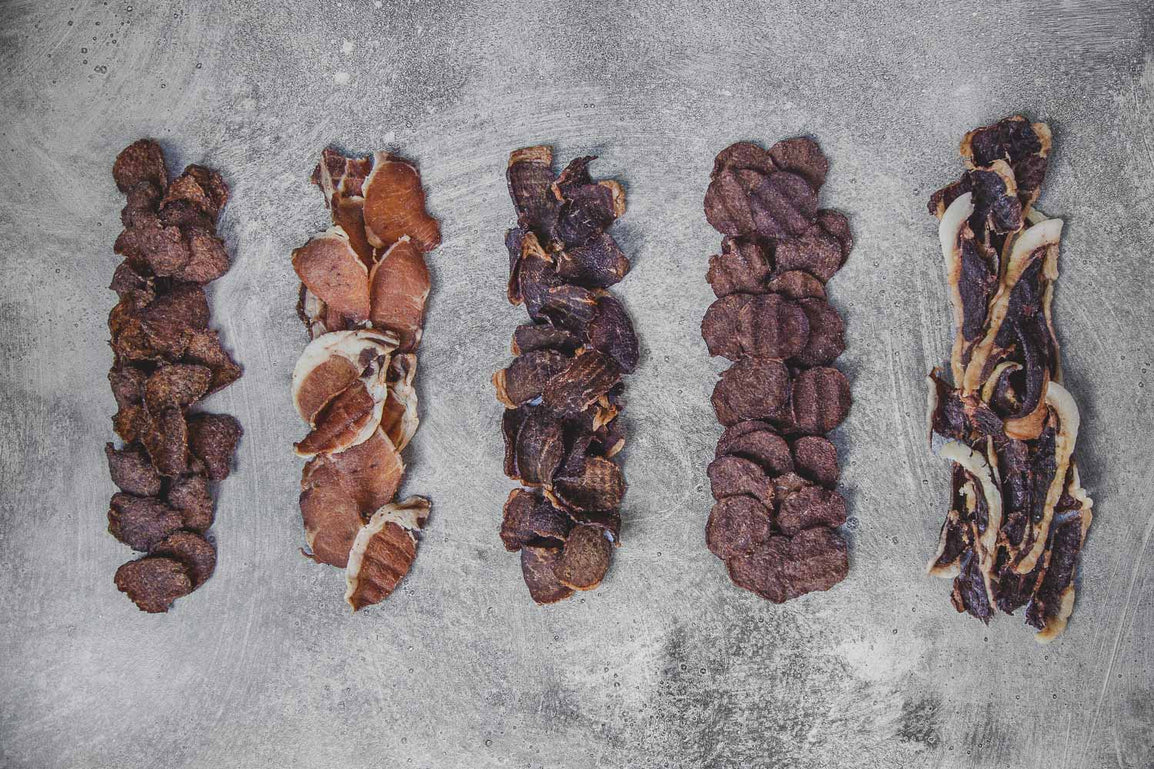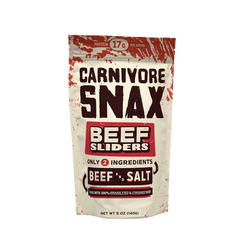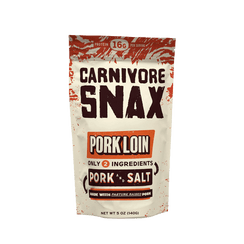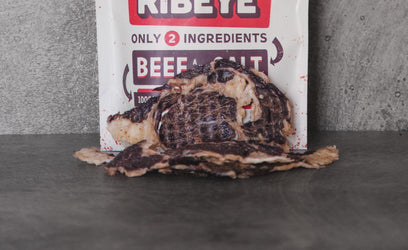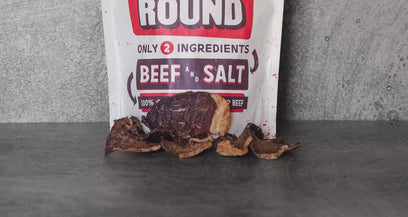THE CARNIVORE DIET BENEFITS




You know the benefits of carnivore diet are profound, and you’re all in on getting started. You’ve taken the time to learn what is allowed on the carnivore diet - but there’s still one thing missing before you dive in. You need to configure your carnivore diet macros ratio.
The macronutrient ratio you consume is just as important as the specific foods you eat. Get this ratio right and you’ll accomplish your goals effortlessly, whatever they may be. But if you don’t consume the proper macros on carnivore diet, you’ll find yourself spinning your wheels.
The good news? We’re here to help you nail this vital aspect of the carnivore diet. We’ll teach you how to calculate macros for carnivore diet, including the key factors that influence your ideal macro ratio. Then, we’ll empower you with tips on hitting macros on carnivore diet so you can see results quickly.
But first, let’s set the stage with a brief overview of macronutrients in general, along with some context for why configuring and adjusting macros for carnivore diet cannot be overlooked.
What are Macronutrients?
One of the most common questions we see asked in this community is how much to eat on carnivore diet. But, what people who ask this question are really looking for is advice on how many calories to intake.
Food is nothing more than a tool that fuels your body - and calories are used as a gauge of how much you should eat. But, if we break that down even further, macronutrients are the building blocks of calories.
These are the primary nutrients that our bodies require in large amounts to function optimally. They consist of proteins, fats, and carbohydrates. Each of these macronutrients plays a vital role in our overall health, providing energy, supporting growth and development, and regulating various bodily functions. Here’s a quick breakdown of the role each macronutrient plays:
- Proteins - Proteins are essential for the growth, repair, and maintenance of our body's tissues, including muscles, bones, skin, and hair. They also play a crucial role in the production of hormones, enzymes, and antibodies. Proteins are made up of smaller units called amino acids, which can be either essential (meaning our bodies can't synthesize them and must obtain them from food) or non-essential (meaning our bodies can produce them).
- Fats - Fats are a concentrated source of energy, providing more than double the energy per gram compared to proteins and carbohydrates. They are necessary for the absorption of fat-soluble vitamins (A, D, E, and K), the production of hormones, and the maintenance of healthy cell membranes. Fats can be categorized as saturated, unsaturated (including monounsaturated and polyunsaturated), and trans fats. Unsaturated fats are generally considered healthier options, as they can help improve cholesterol levels and reduce inflammation.
- Carbohydrates - Carbohydrates are the body's preferred source of energy, as they can be easily broken down and converted into glucose, which our cells use for fuel. Carbohydrates can be classified as simple (sugars) or complex (starches and fibers). Complex carbohydrates, such as whole grains, legumes, and vegetables, are considered healthier options because they provide a more sustained energy release, help regulate blood sugar levels, and offer essential vitamins, minerals, and fiber.
While the standard American diet consists of all three of these, carnivore is unique in that you won’t consume many carbs. Why? Well, because the foods you eat on this diet are all inherently carb-free or low-carb.
In just a moment, we’ll help you determine your ideal macros for carnivore diet. But first, let’s talk about why this isn’t something you can afford to get wrong…
Why Choosing the Right Macros on Carnivore Diet is so Vital to Achieving Your Goals
You have made the decision to try carnivore for a reason. Maybe you’re interested in the carnivore diet for weight loss - or perhaps you want to gain muscle. Or, maybe your goal is to improve your cognitive function. Whatever your goal may be, one thing is for sure: the specific macronutrient ratio you consume will influence your rate of success.
The ideal macros for weight loss are not the same as the ideal macros for muscle gain. Similarly, an athlete’s protein requirements are vastly different from someone who is simply looking for cognitive improvements. Getting the right balance of protein and fats - while keeping carbs low - is the key to unlocking effortless results on this diet.
But more importantly, following the right macro breakdown is key to giving your body the fuel it needs to function efficiently and promote optimal health. This is true whether you’re following carnivore diet vs keto or carnivore diet vs paleo.
Now, you’re likely wondering - what should my macros be for carnivore diet? We’ll help you find out below…
How to Configure Your Carnivore Diet Macros Ratio Based on Your Goals
Ready to learn how to configure your carnivore diet macros ratio be based on your goals? Really, it’s not as difficult as it sounds. There are all sorts of carnivore diet macros calculators that can help you find the sweet spot for each macronutrient. But the first step is determining your goals with this diet…
Factors Influencing Your Ideal Macros for Carnivore Diet
There are three main factors influencing your ideal macros for carnivore diet. These should be carefully considered in the context of defining your macronutrient breakdown as you dive into this journey:
- Activity Level: Your activity level greatly influences the amount of energy and macronutrients you need to maintain, lose, or gain weight. For example, if you live a highly active lifestyle and undertake intense daily workouts, you’ll have higher protein requirements to support muscle growth and recovery. On the other hand, a sedentary individual with limited physical activity may require fewer calories overall, with a lower proportion of their energy coming from fats.
- Body Composition: The amount of lean muscle mass you have influences your basal metabolic rate (BMR). Consequently, this influences the number of calories you burn at rest. Individuals with a higher muscle mass may need more protein to maintain their muscle mass, while those with a higher body fat percentage might benefit from a higher fat intake to promote satiety and assist with weight loss.
- Health Goals: Your specific health goals, such as weight loss, muscle gain, or improved athletic performance, will impact your macronutrient distribution. For instance, someone aiming for weight loss might consume a higher proportion of protein to maintain lean muscle mass while reducing their overall caloric intake. In contrast, someone focused on building muscle could prioritize protein and increase their overall calorie consumption.
So, with that said, it’s time to address the question that brought you here - what should my macros be on carnivore diet?
So, What Should My Macros be on Carnivore Diet?
You can use a carnivore diet macros calculator or simply follow our recommendations below to determine your ideal macros for the carnivore diet:
Now, we’re going to set you up for success by providing you with some tips on how to hit your macros on carnivore diet.
Tips for Adhering to Your Carnivore Diet Macros
Learning how to calculate macros for carnivore diet is step one - and the easiest part of following this diet. The hard part is actually hitting macros on carnivore diet day in and day out.
But, this is something we have first-hand experience with - so you can rest assured you’re in the right place. Our journey on carnivore has been made much easier as people have provided us with advice along the way, and we’re going to do the same for you. The following tips will make much easier to adhere to your macros on carnivore diet….
Track Everything
It's essential to track your daily food intake to ensure you're meeting your macronutrient goals. Monitoring your macros helps you make adjustments as needed and provides valuable insights into your diet's effectiveness.
You can use a food diary or smartphone app to log your meals and track your macros. Be sure to measure portion sizes accurately with a food scale or measuring cups to ensure you're correctly logging your intake.
Prepare Meals in Advance (in Bulk)
To prevent overeating or undereating, you can proportion your meals in advance, in bulk. This won’t just eliminate issues with missing your macros on a given day. It also saves you time and effort - and when done correctly, can save you money too!
Set aside time at the start of each week to plan your meals, shop for ingredients, and cook in bulk. Divide your meals into individual servings and store them in the refrigerator or freezer for easy access throughout the week.
Keep the Right Snacks on Hand for Meeting Protein & Fat Goals
The hardest part of sticking to your macros is battling cravings - especially early on. This is why we created our list of carnivore snack ideas for you - featuring the best no-carb snack available online: Carnivore Snax.
Our meat chips feature just two ingredients - meat and salt. You get a healthy serving of protein, and depending on which specific meat snack you go with, you’ll have no trouble meeting your fat goals either. These have been referred to as “meat pastries” by those who have tried them because they are melt-in-your-mouth good.
And with so many tantalizing flavors to choose from, you’ll never get bored! Stock up today by getting your ribeye chips, steak chips, lamb chips, beef chips, brisket chips, chicken chips, or pork chips at Carnivore Snax.
Adjusting Macros for Carnivore Diet Over Time
As your body changes and your goals evolve, you may need to adjust your macros accordingly. Or, maybe you discover early on that meeting your macros is just not feasible. That’s ok - adjusting macros for carnivore diet is part of the journey.
Monitor your progress and make adjustments to your protein, fat, and carbohydrate intake based on your body's needs and your evolving goals. It's essential to remain flexible and adaptable in your approach to the carnivore diet, as what works initially may need to be tweaked over time.
Additional Advice on Following Your Carnivore Diet and Achieving Your Goals
Before we bring this conversation to a close, we want to live you with a few more carnivore diet tips for success:
- Stay consistent: If you hit your carnivore macros one day and miss the mark the next, you’ll end up spinning your wheels. This leads to frustration and can leave you feeling hopeless. Consistency is critical for seeing progress and achieving your desired results.
- Listen to your body: Pay attention to your body's signals, such as hunger, fullness, and energy levels. Adjust your macros and food intake accordingly, based on how you feel and perform.
- Seek support: Connect with others who follow the carnivore diet, either in person or online. Sharing experiences, advice, and encouragement can be incredibly helpful & inspiring on your journey.
- Consider professional guidance: Consult with a nutritionist or healthcare professional knowledgeable about the carnivore diet to ensure you're meeting your nutritional needs and addressing any potential health concerns.
- Be patient: Achieving your goals on the carnivore diet may take time. Stay committed, trust the process, and give your body time to adapt and respond to the dietary changes.
Bringing Our Conversation on Carnivore Diet Macros Ratio to a Close
At this point, it’s time to wrap up our discussion on not just how to calculate macros for carnivore diet - but how to hit your macros on carnivore diet consistently. Hopefully, you feel more confident and inspired to determine your carnivore diet macros ratio and start this journey strong.
For more advice on how to start the carnivore diet, explore our blog. You’ll learn about the carnivore diet pros and cons, how to eat a high protein diet, how to do carnivore diet on a budget, carnivore for women, and a whole lot more.
But now, it’s time for you to stock up on the best meat snacks the world has to offer - our carnivore chips. Armed with these delicious, nutritious treats and this advice on carnivore diet macros ratio, you’re well on your way to realizing your goals!










